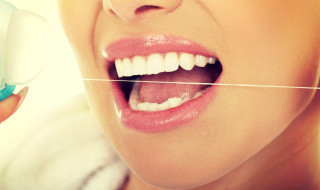 The European Federation of Periodontology (EFP) believes that recent media coverage on the efficacy or otherwise of flossing has been highly misleading to the public and to patients.
The European Federation of Periodontology (EFP) believes that recent media coverage on the efficacy or otherwise of flossing has been highly misleading to the public and to patients.
According to the EFP, the coverage has largely focused on sensationalism or, at best, a ‘good story’ and, in so doing, various so-called ‘experts’ (with varying degrees of knowledge and expertise) have expressed differing views, which has created confusion for patients, the public and – indeed – parts of the profession.
The federation held an international workshop in Spain in November 2014 where nearly 90 experts from across the globe considered the evidence for the role of interdental cleaning as developed in a comprehensive meta-review (a review of systematic reviews, which represents the highest level of evidence from randomised controlled trials).
The EFP recognises that there were limitations in the knowledge base, and it is important to understand that a lack of evidence is not necessarily the same as evidence of a lack of efficacy. But it argues that cleaning between the teeth on a daily basis is essential to maintain gum health.
The EFP believes the debate focused on the best method of interdental cleaning to reduce gingivitis and plaque levels between teeth when used in addition to normal mechanical toothbrushing. This is a different issue from measuring efficacy in preventing the development of gingivitis over time. There was a moderate evidence base that supported the use of interdental brushes as being effective in removing plaque from between the teeth, and they are recommended as the method of choice where spaces between teeth allow their insertion without causing trauma.
However, large studies that measure the efficacy of plaque removal on a ‘group’ basis failed to demonstrate that flossing is generally effective in plaque removal between teeth and in reducing gingival (gum) inflammation. This is largely because patients find flossing difficult to perform and it is frequently performed incorrectly. This does not, however, mean that individuals who can floss correctly will not benefit from doing so.
The consensus also identified that where spaces between teeth were too tight for interdental brushes to be inserted safely, the professional recommendation was that ‘the use of floss may have a role to play in this situation’. However, for all interdental cleaning methods it is essential that professional instruction is given in order to achieve optimal effectiveness and to avoid trauma.


